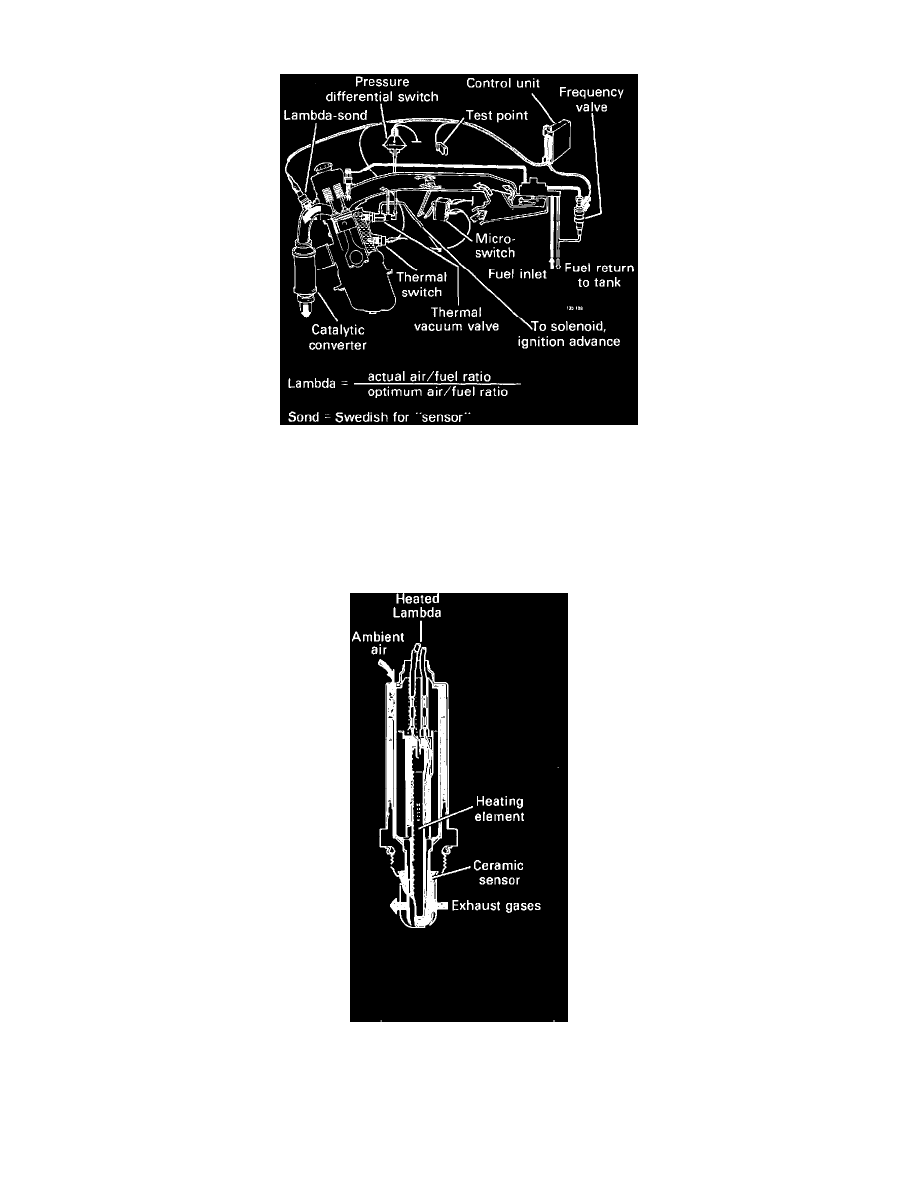240 L4-2.3L SOHC VIN 88 B230F (1986)

Oxygen Sensor (Lambda Sond): Description and Operation
This is a self-adjusting engine control system designed to reduce emissions and improve fuel economy. An exhaust gas sensor (oxygen sensor or
lambda sond), monitors the oxygen content in the exhaust gases. The exhaust gas measurements are fed into a computerized engine control system,
which continuously adjusts the fuel injection system for an optimum air/fuel ratio. This provides the optimum condition for best fuel economy and the
elimination of major pollutants by a three-way catalytic converter. Fig. 33.
IMPORTANT!
Small amounts of lead are sufficient to damage the lambda sond. Always use unleaded gasoline.
Fig. 35 LAMBDA SOND (HEATED)
LAMBDA SOND (OXYGEN SENSOR)
Measurements are taken by a ceramic sensor in the lambda sond. It produces a small voltage (90 - 100 mV, or 0.9 - 1.0 V) in proportion to the
difference between the oxygen content of the exhaust and the oxygen content in the air. The electrical heating element in the lambda sond will heat the
sensor to its operating temperature of 350°C (660°F). The lambda sond is located in the exhaust system upstream of the catalytic converter. Fig. 35.
